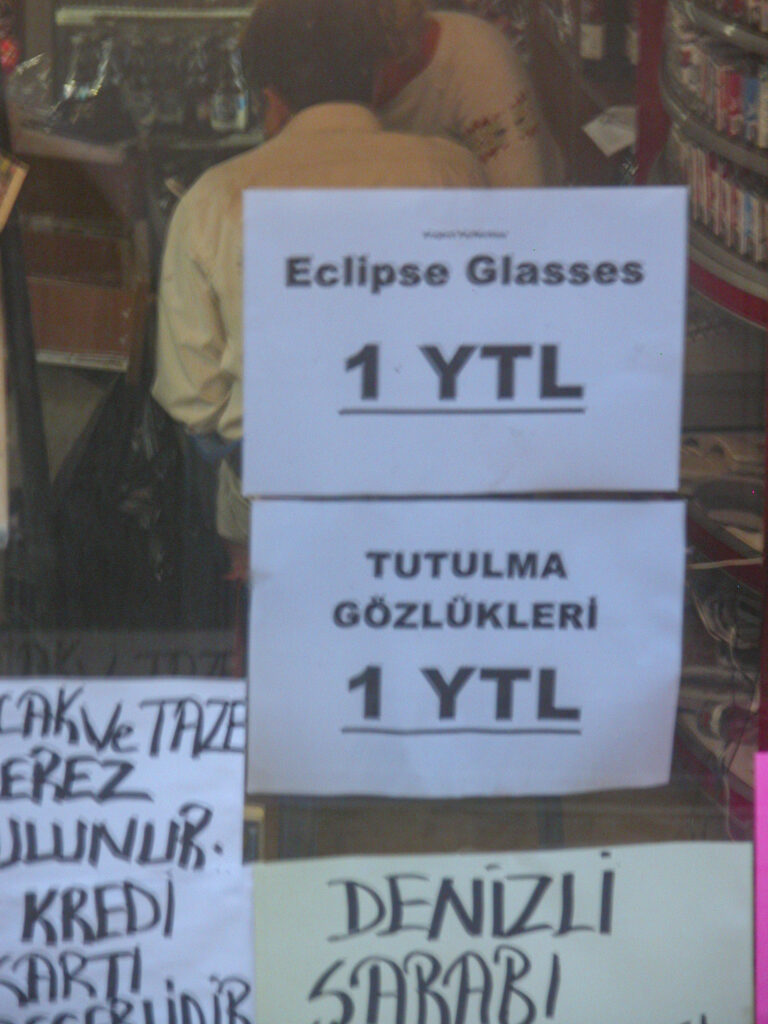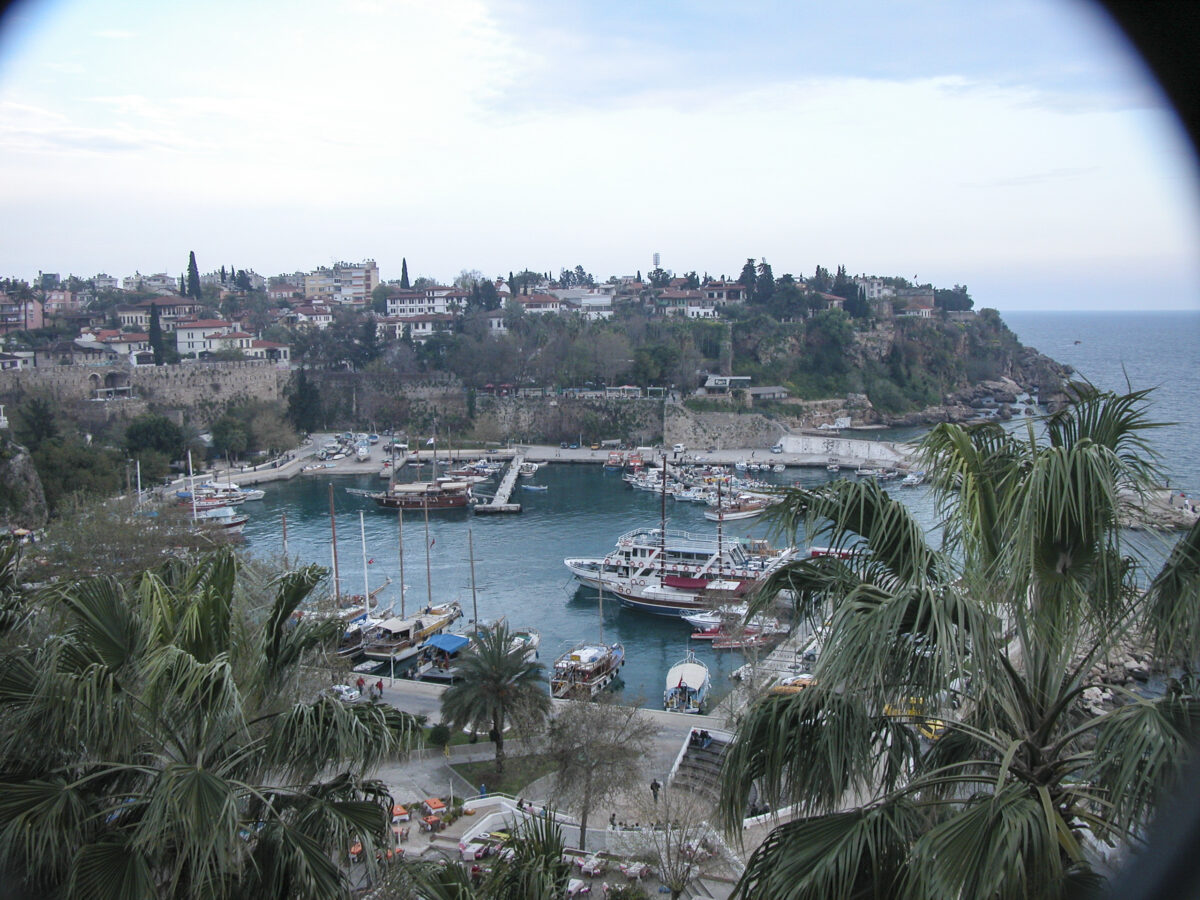Antalya began as Attaleia, named for its founder, King Attalus II of Pergamon, around 150 BCE. He found that its excellent harbor made it a good location for a naval base, which it continued to be under the Romans and Byzantines, while also becoming a major commercial port. In antiquity the area of present-day Antalya province was known as Pamphylia, and its chief city was nearby Perga, the ruins of which we were to see the following day.
The Seljuk Turks conquered the city in the early 13th century, and the Ottomans took it over in the 15th. The Turks converted the Byzantine churches to mosques. Most of the surviving architectural monuments date from medieval Turkish times.
In the modern era Antalya remained a small pastoral town until the 1970s, when it began to expand into one of Turkey’s largest metropolitan areas, largely owing to the growth of tourism in the region. Antalya is now Turkey’s largest summer resort city, and over 13 million tourists visited in 2019. There is much to see in and around Antalya. It has magnificent beaches, many historical sites, parks, nature sanctuaries and picnic areas, as we would shortly discover.
As we emerged from the fastnesses of the Taurus Mountains, we made a brief rest stop at a spot perched on the dizzying heights above the Mediterranean waterfront near Antalya.
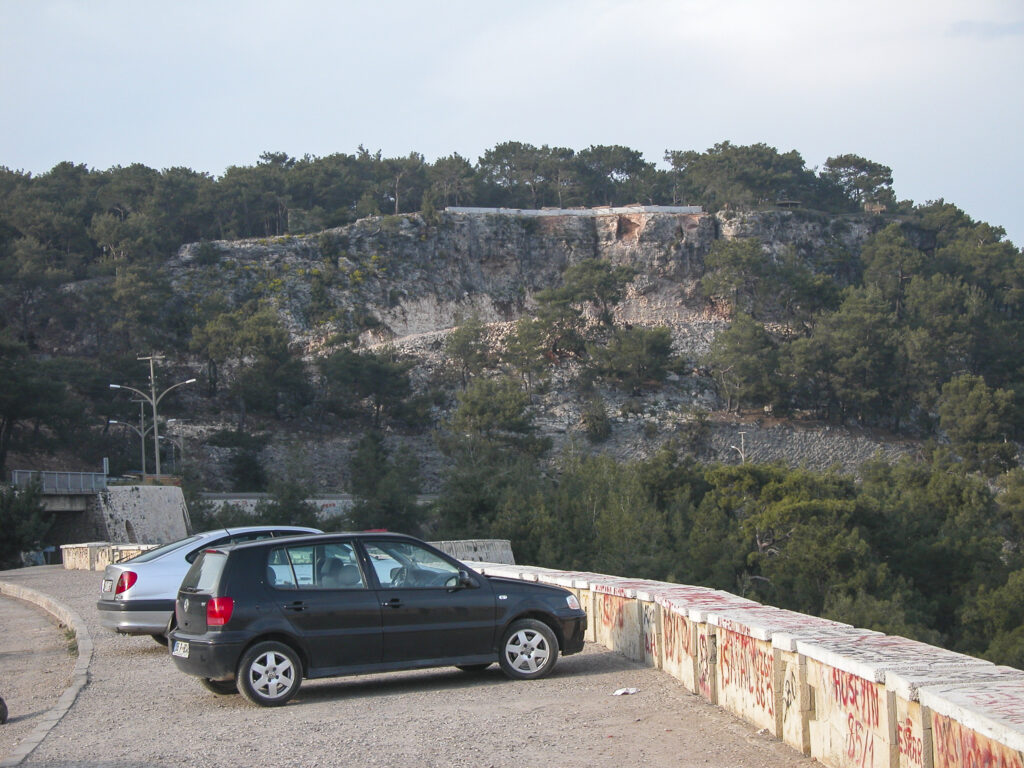
We caught our first glimpse of the Mediterranean Sea from this promontory.
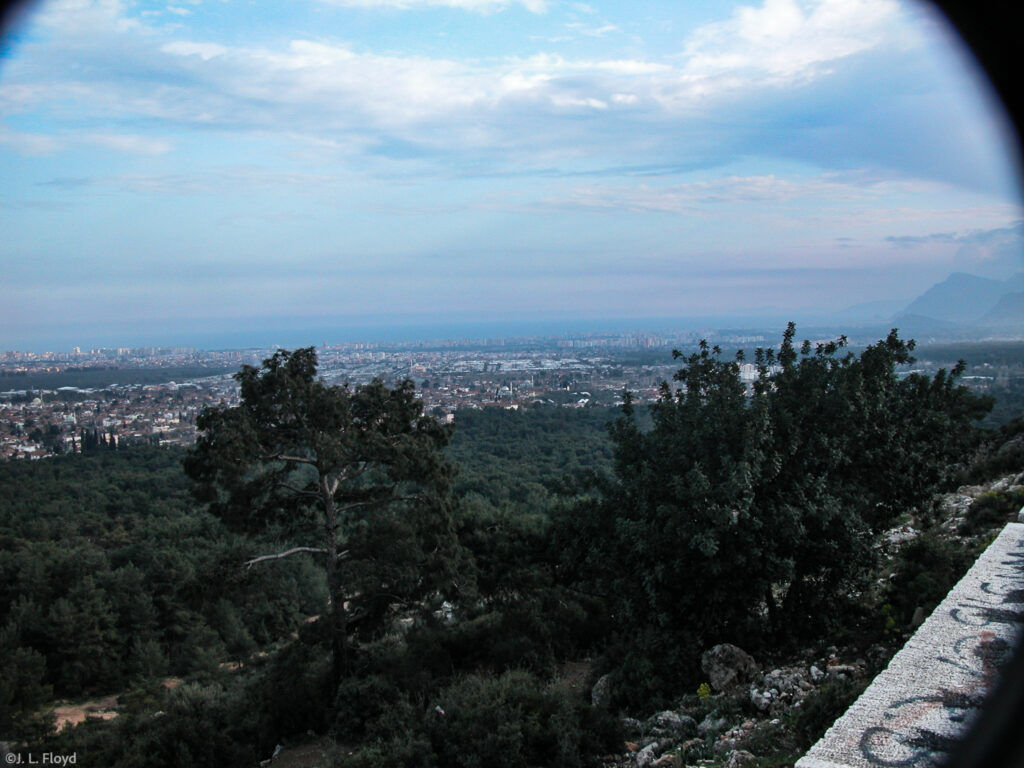
Our first impression of Antalya was that it appeared to be a very modern city, with lots of construction going on.
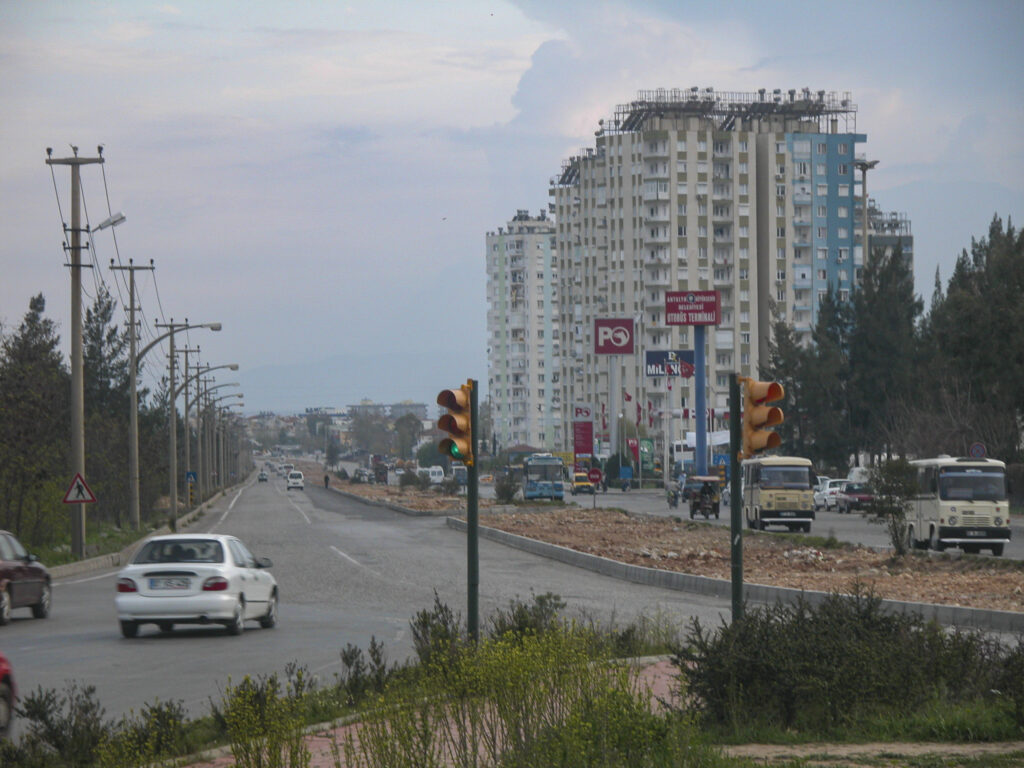
I took a photo of a rather banal monument to Kemal Mustafa Ataturk, improbably shown on horseback, against a backdrop of two minarets. The closer of the two, the Yivli (Fluted) Minaret, is the signature landmark of the city. It belongs to the Ulu Cami, or Grand Mosque, also known as the Alaadin Mosque, which was first built in 1230 under the Seljuk Sultan of Rum Alaadin Keykubad I. It was destroyed in the 14th century (a rough time for nearly everyone) and rebuilt in 1373. It now houses an ethnographic museum.
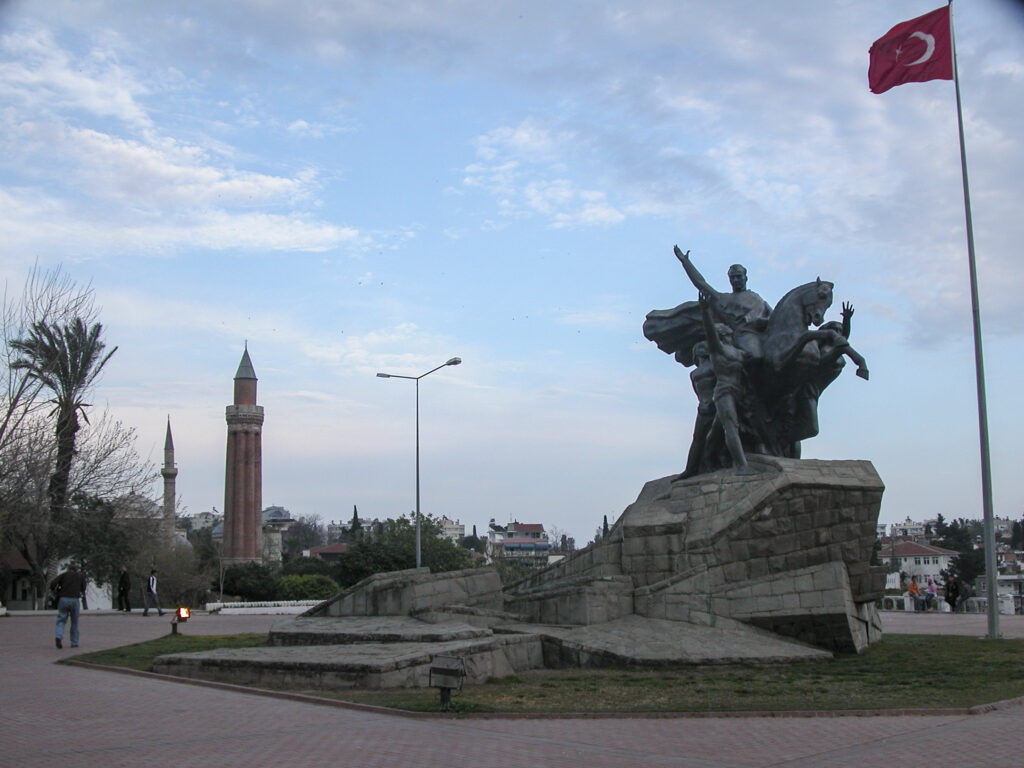
It was time for dinner on our arrival in Antalya, and our bus took us directly to the Old Harbor Marina, located at the foot of a high cliff. We parked on the heights and walked down the steep descent to the Marina, where our restaurant awaited.
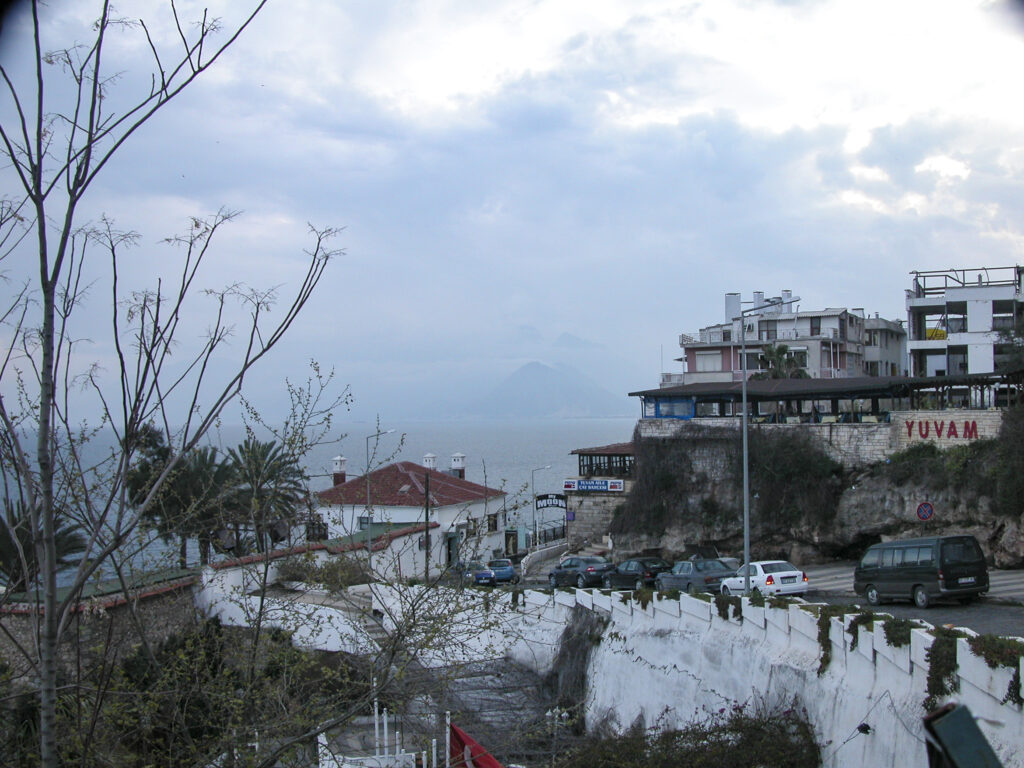
Before wending our way down to the marina, we made sure to get plenty of shots featuring the spectacular views from the heights above. Just north of the Old Harbor, and adjoining it, is the city’s oldest quarter, known as Kuleici, to which we would make a brief visit after dinner.
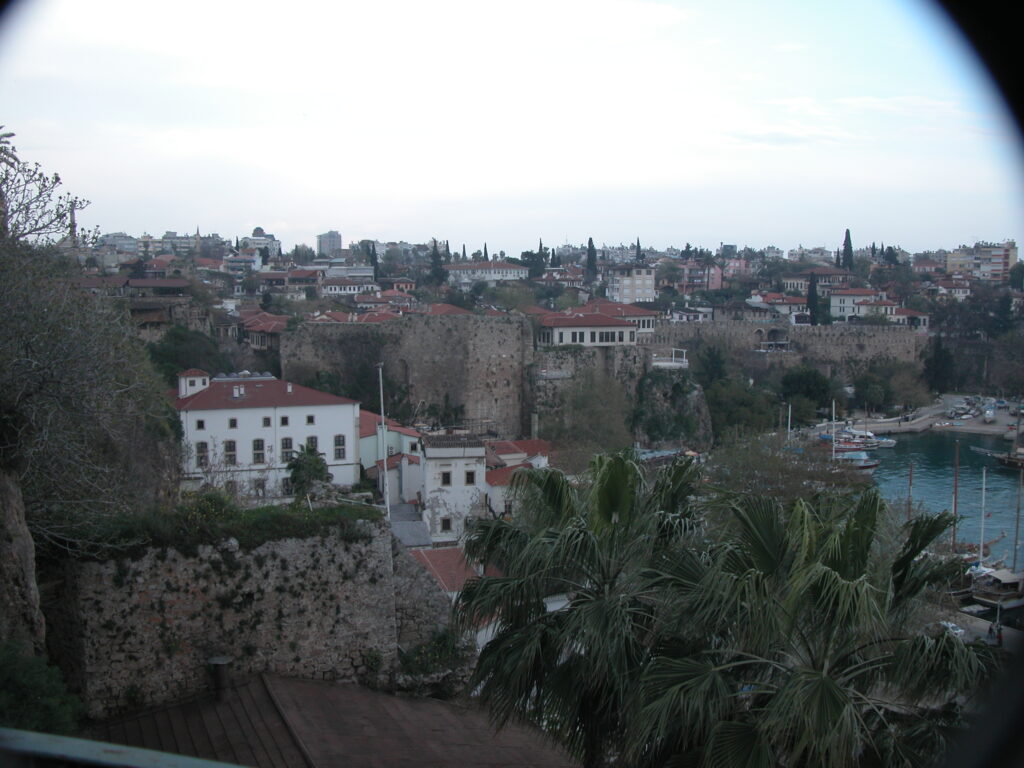
The Old Harbor of Antalya, with its fortified walls and sparkling blue-green water, was an ideal location for dinner.
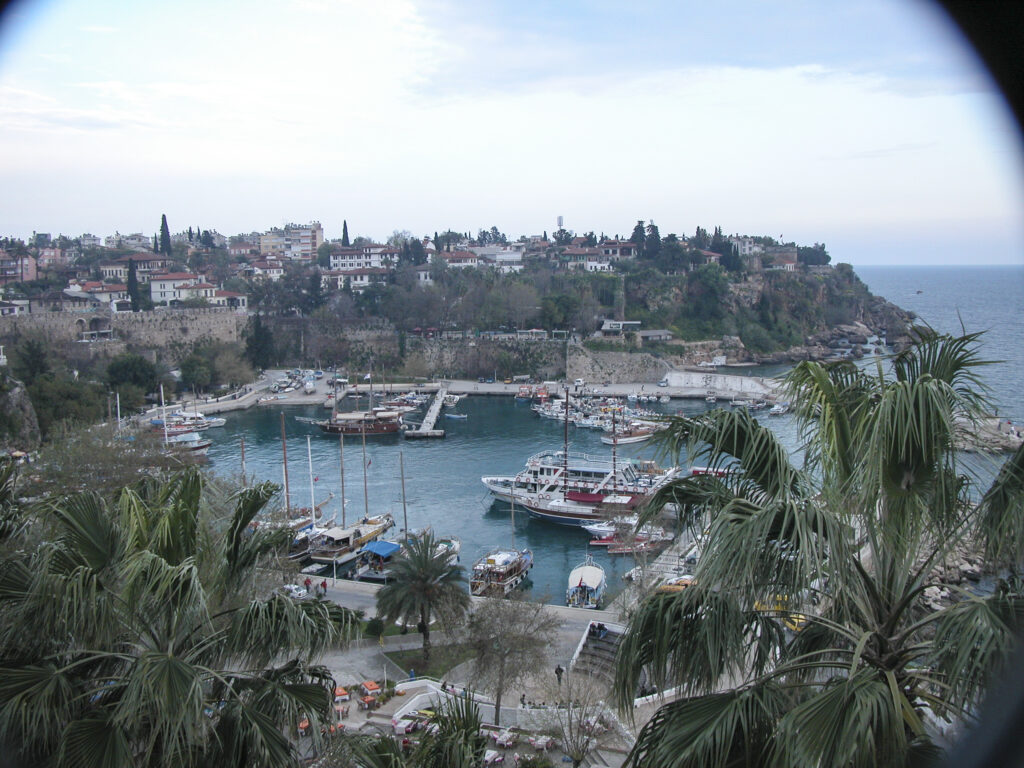
From our position on the west side of the harbor, we looked across to the east side, where a number of palatial residences were situated, with great views of the Mediterranean.
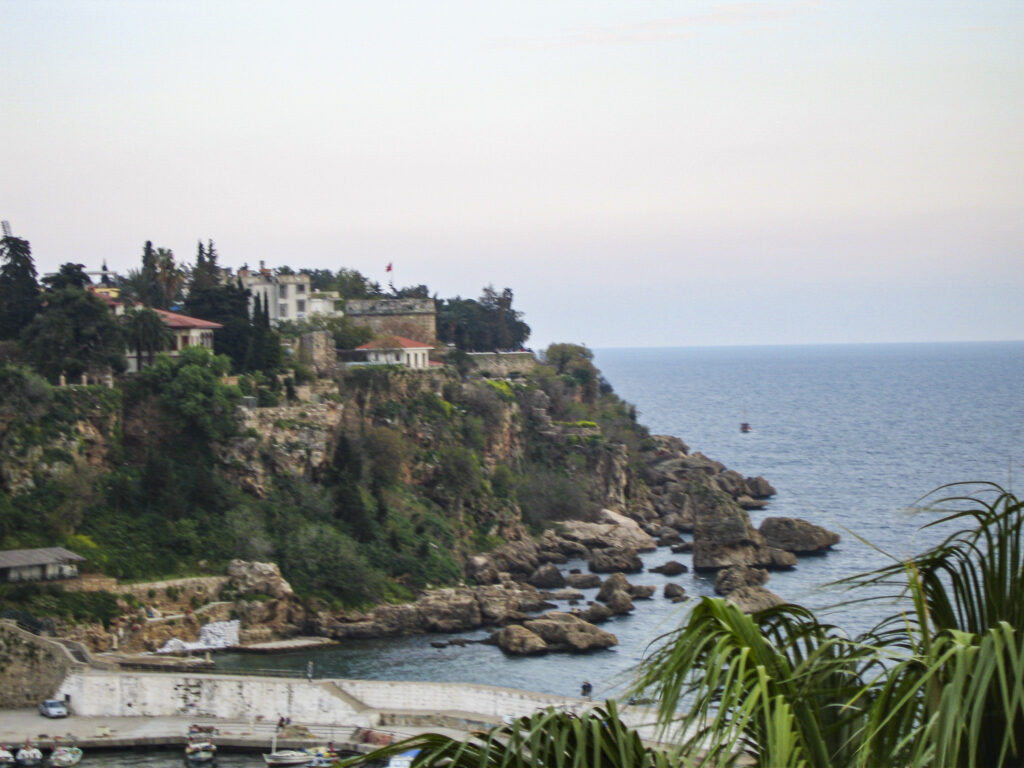
I saw little indication that the Old Harbor had once hosted a naval base or a large-scale commercial port. It wouldn’t be large enough for such facilities in modern times. But now it makes a great location for a private boating marina, and it was thronged with excursion boats and private yachts of all kinds.
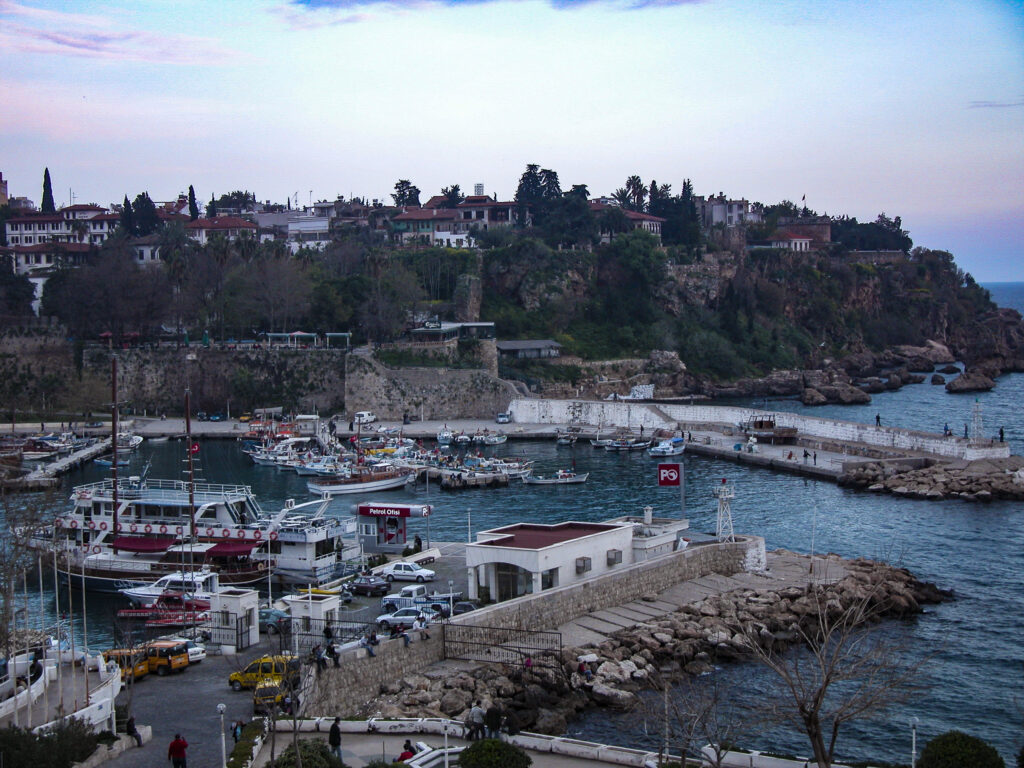
There was no end of sumptuous pleasure yachts, both sail- and motor-powered; my favorite was the striking two-masted schooner seen below.
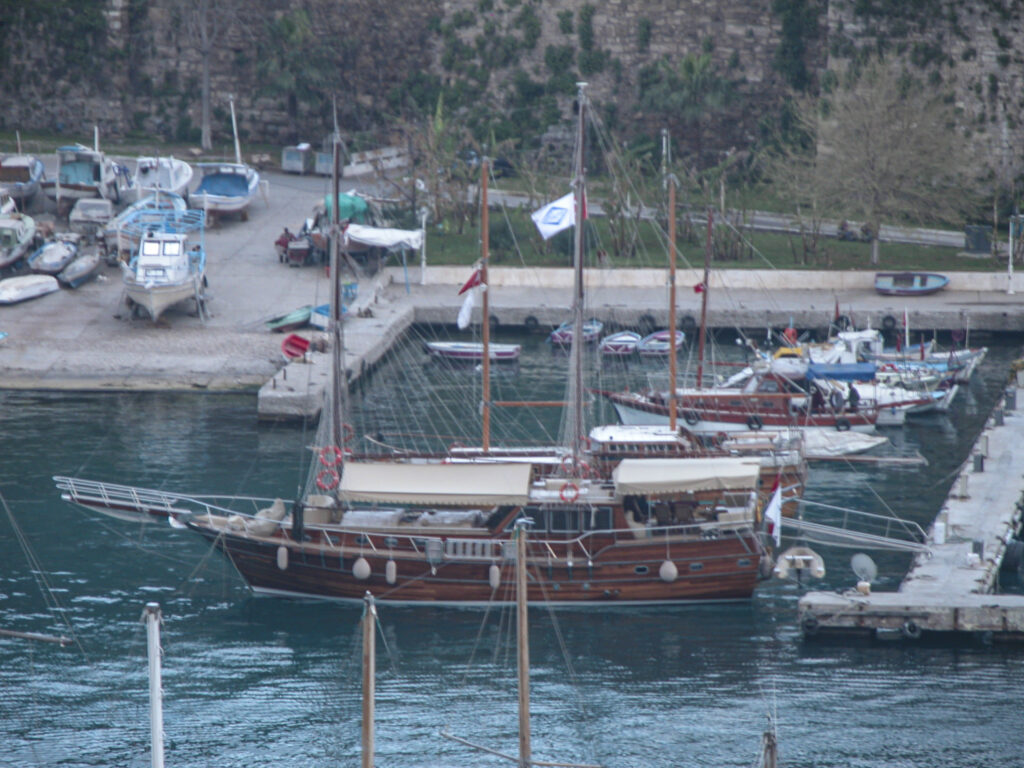
On the walk down to the harbor, I shot a picture which I thought perfectly elucidated the contrast between the ancient and the modern: the Ottoman-era fortifications guarding the harbor, sandwiched between the modern structures on top of them and the late-model yachts in the water below.
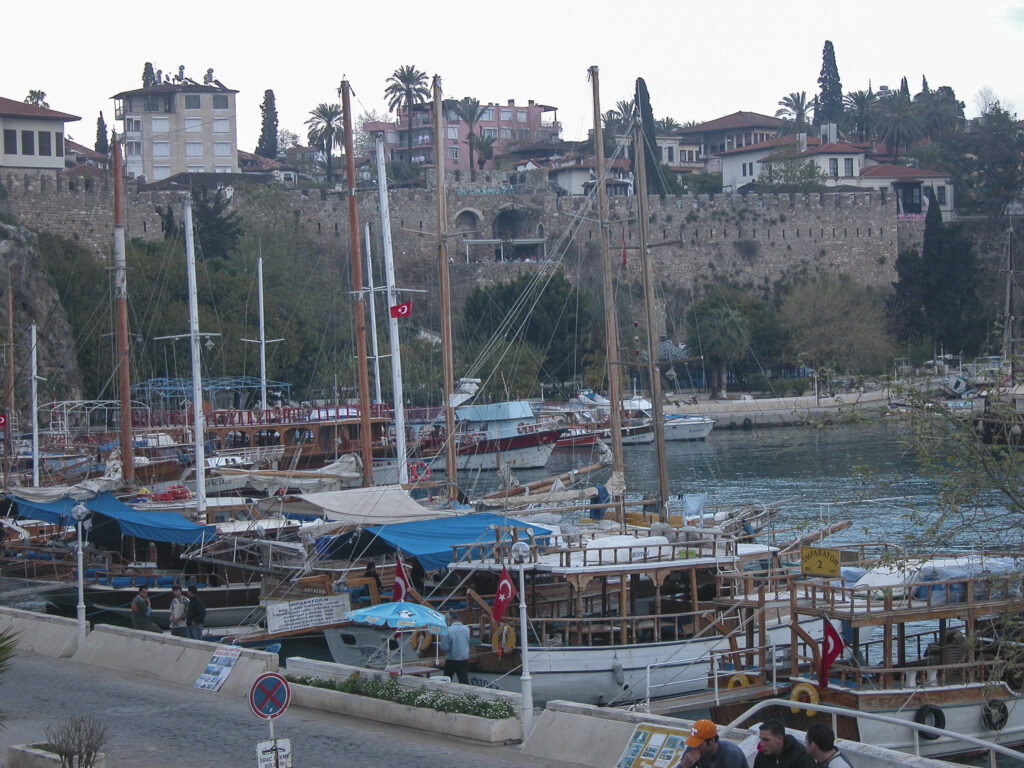
I zoomed in the camera to get a closer shot showing the bastion walls in greater detail, along with the structures on top of them.
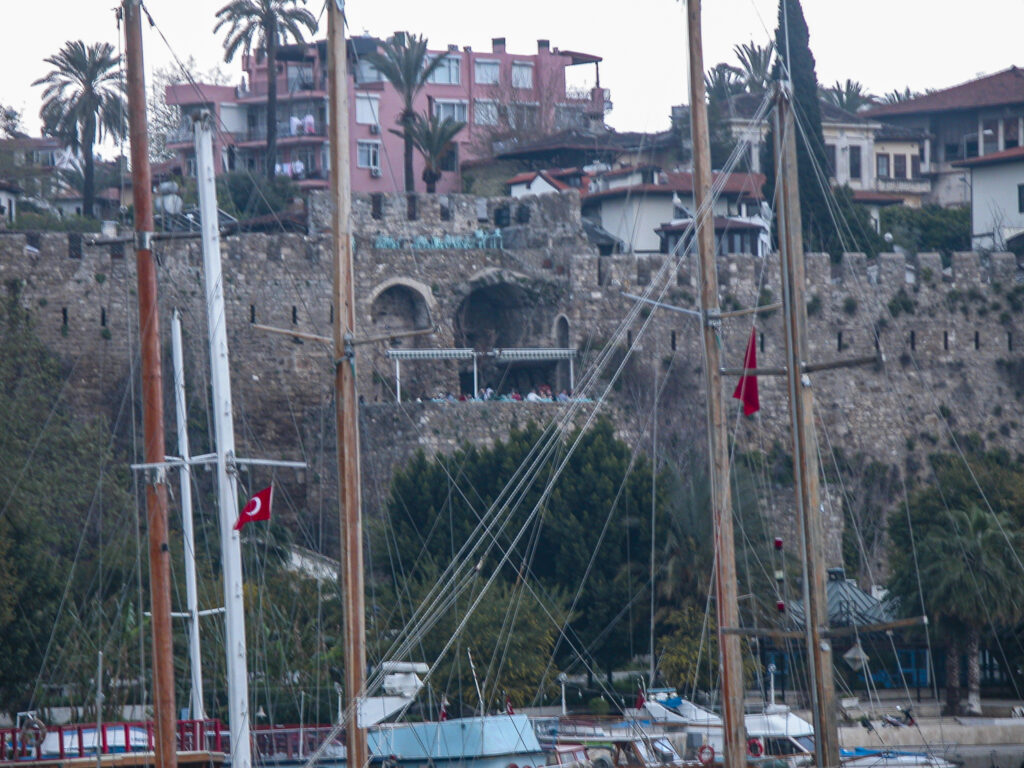
After dinner at the Ekici restaurant, we had a chance to stroll around the marina and check out the assortment of watercraft.
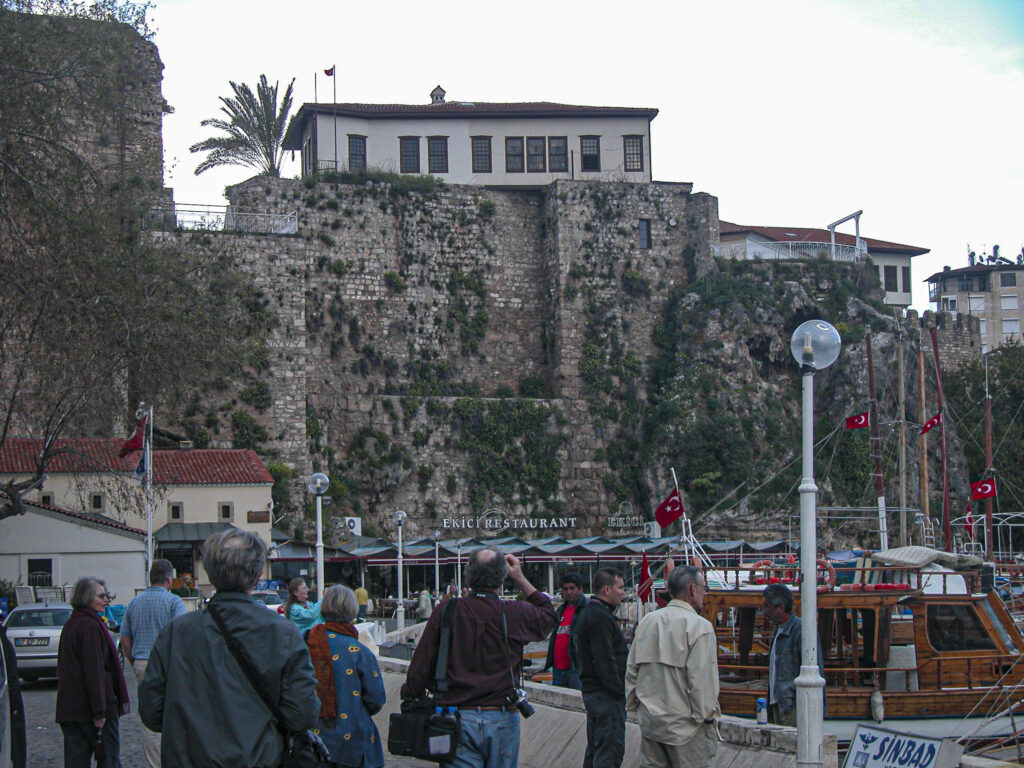
Wandering around the docks, I came across the palatial motor yacht shown below, flying the Turkish flag but bearing the name of a Greek god, “Poseidon-2”. That seemed a little bit odd to me, but maybe not to its owner.
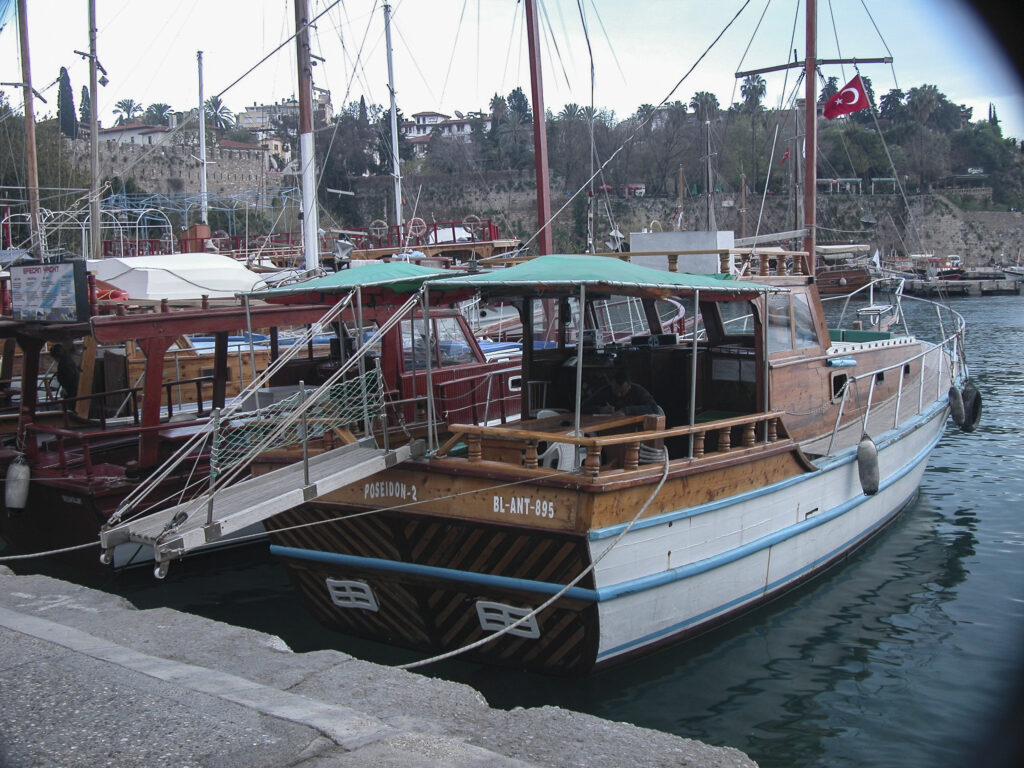
Superstructures of finely crafted, highly-polished wood were typical of both motor and sail yachts in this marina.
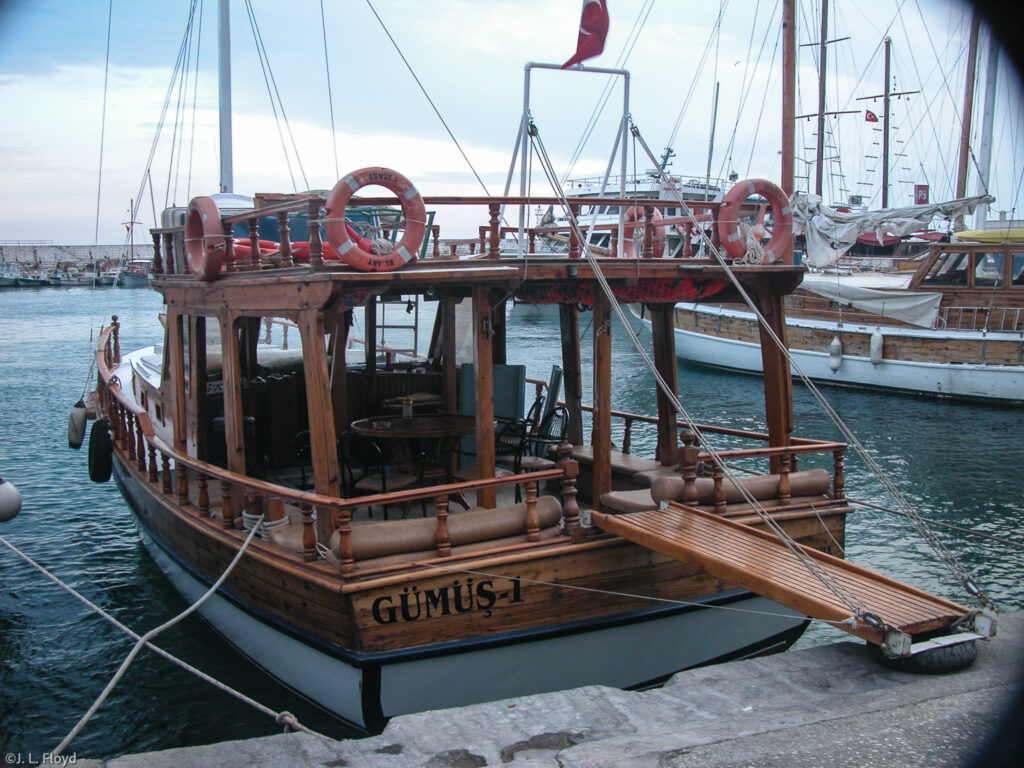
The Mediterranean coast of Turkey was a haven for pirates in ancient times, and I imagine that their descendants are represented among the owners of the boats moored here, such as this magnificent sailing yacht.
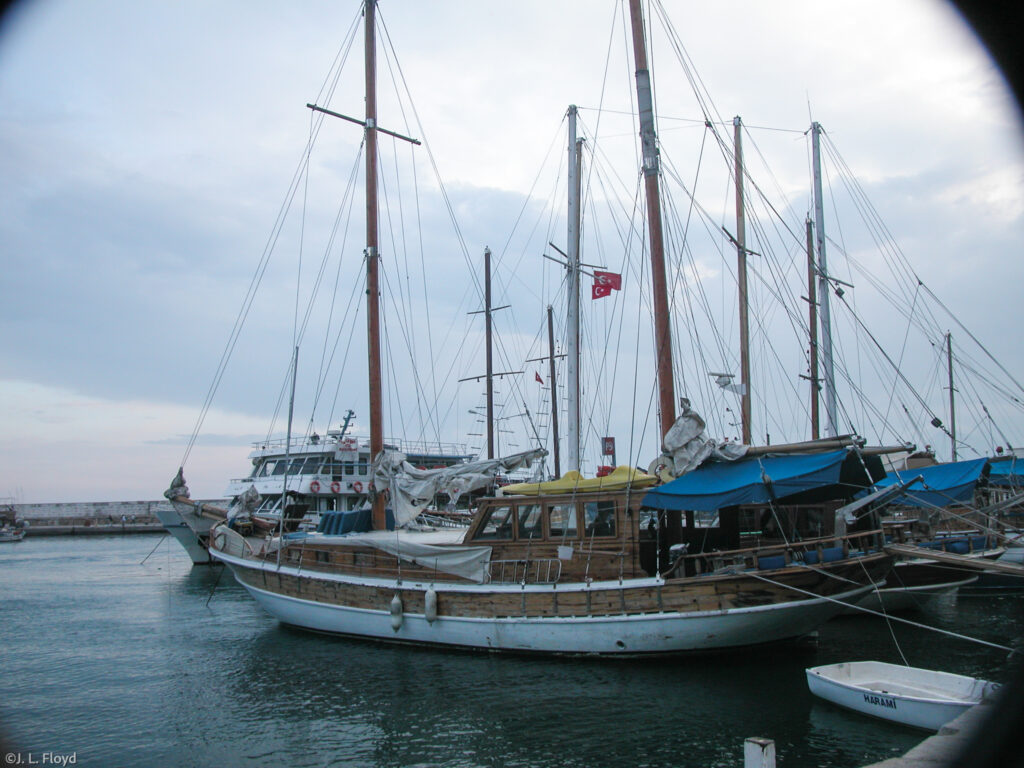
Sandie took a closer picture of a section of the harbor wall, with a restaurant at the top. It’s hard to see, but near the upper right-hand corner, just to the left of a palm tree and partly obscured by another palm below it, there is another of those ubiquitous Miller Time beer billboards.
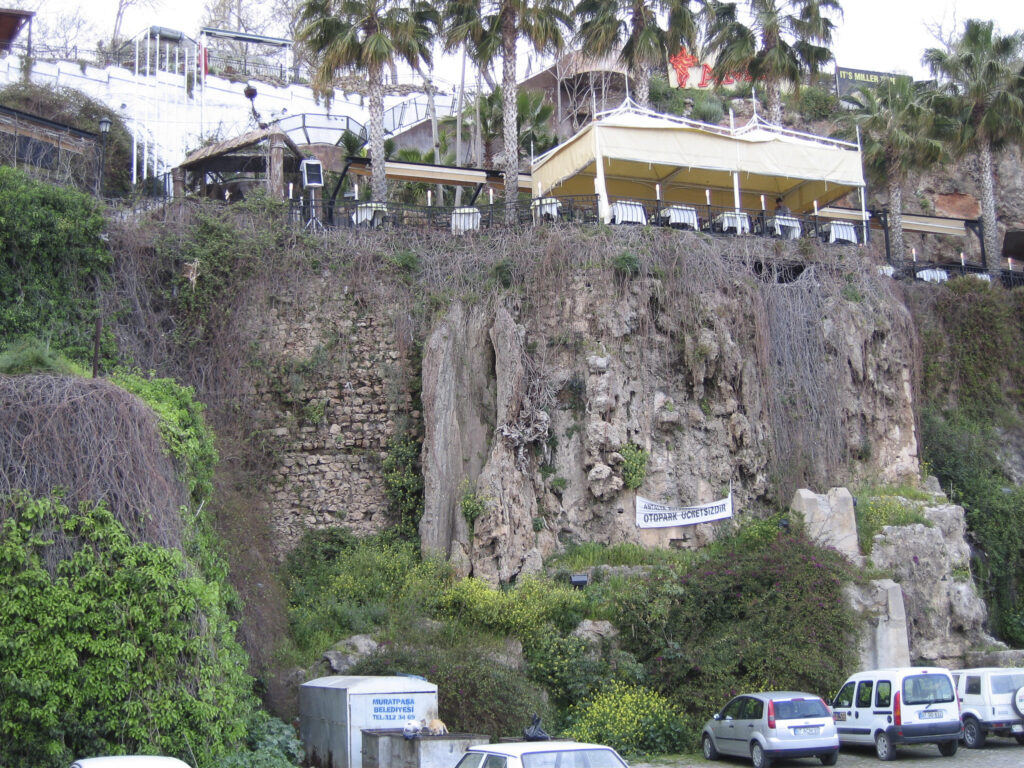
Climbing back up the cliff road, I paused to snap a picture of a model of BMW motorcycle I had never seen before, a 1-cylinder street bike. Motorcycles are a major mode of transportation in Turkey, and the newest and most advanced models often show up there before one sees them in the U.S.
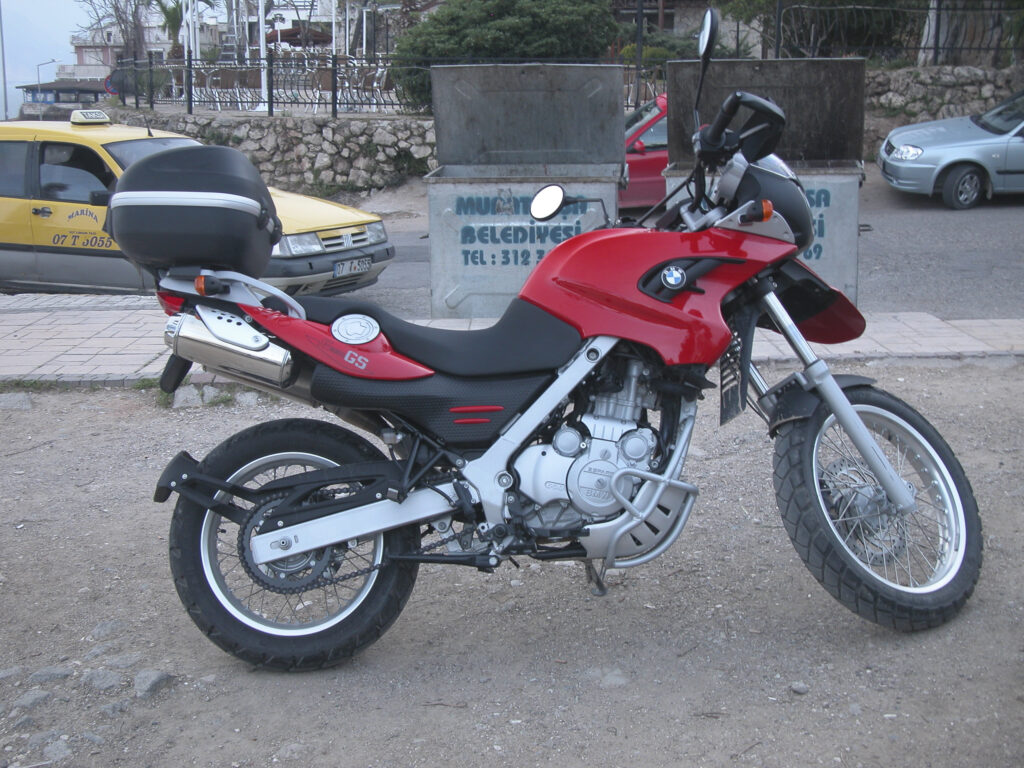
By this time we finished dinner and came back to the bus, it was getting late, and we had time only for a quick look at some of the other attractions of Antalya before dark. One of them was the Tekeli Mehmet Pasha Mosque, seen here. It was named for Lala Mehmet Pasha, a Grand Vizier in the reign of Sultan Mehmet III (reigned 1595-1603).
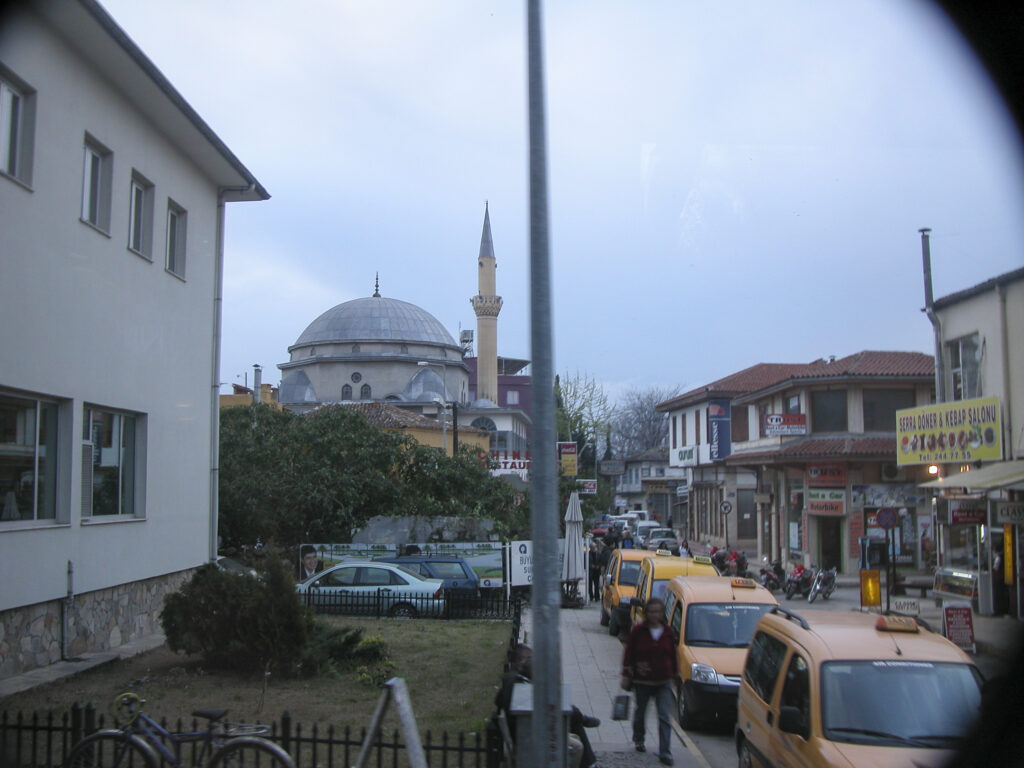
Not far from the Tekeli Mehmet Pasha Mosque, Hadrian’s Gate is the oldest surviving structure of Roman vintage. It was built around 130 CE in anticipation of a visit by the Roman emperor Hadrian. I gather that it was covered up and obscured by medieval construction, because the sources say that it was rediscovered in 1817 by a British admiral, Francis Beaufort, but not excavated and restored until the 1950s, after the walls collapsed during an earthquake. According to Beaufort’s description, the gate had a second story, but that was evidently destroyed by earthquakes during the 19th century, because subsequent visitors were unaware of it.
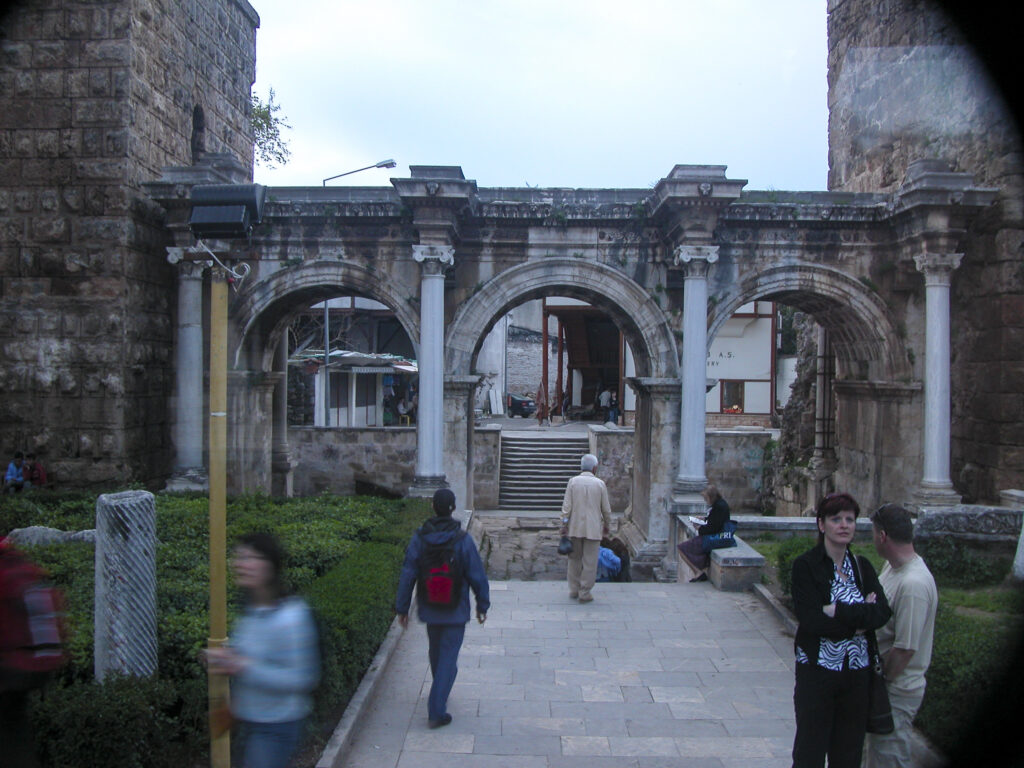
Two days before the eclipse, excitement was building up, and ads for eclipse viewing glasses were posted in every store window.
